Cluster-Size Constrained Network Partitioning
Maksim Mironov,
Konstantin Avrachenkov
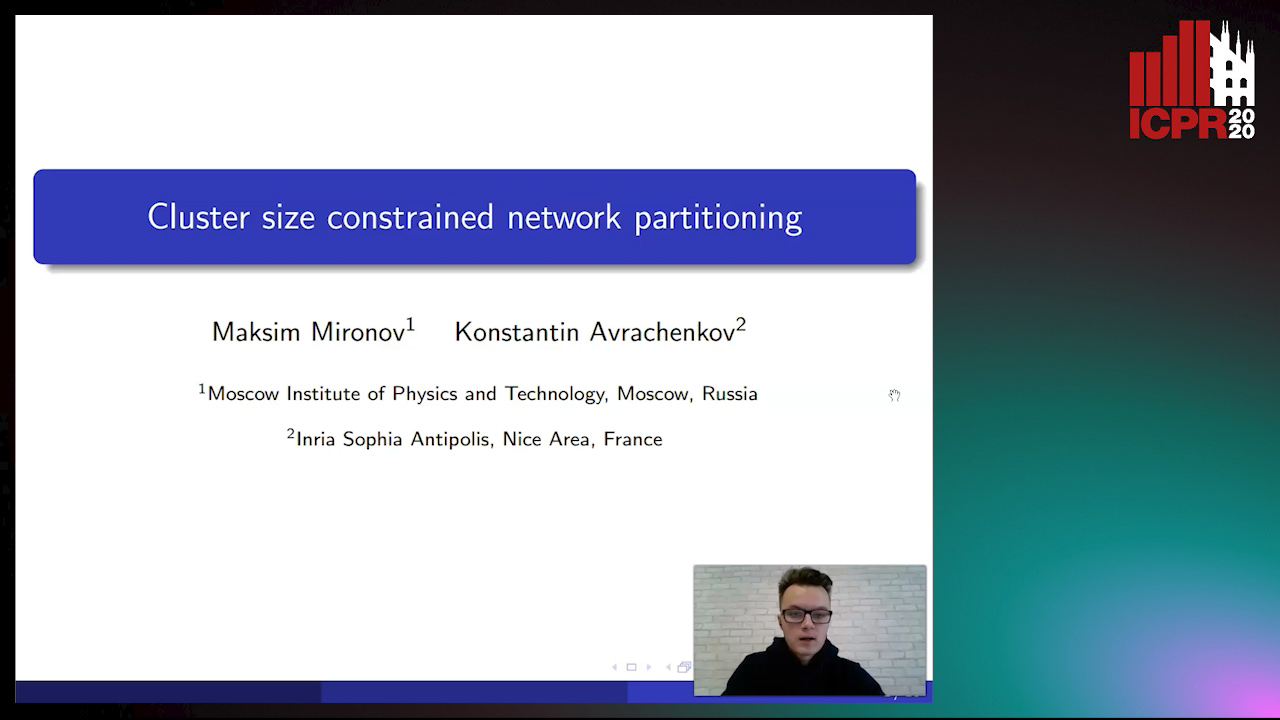
Auto-TLDR; Unsupervised Graph Clustering with Stochastic Block Model
Similar papers
Sketch-Based Community Detection Via Representative Node Sampling
Mahlagha Sedghi, Andre Beckus, George Atia

Auto-TLDR; Sketch-based Clustering of Community Detection Using a Small Sketch
Abstract Slides Poster Similar
Assortative-Constrained Stochastic Block Models
Daniel Gribel, Thibaut Vidal, Michel Gendreau
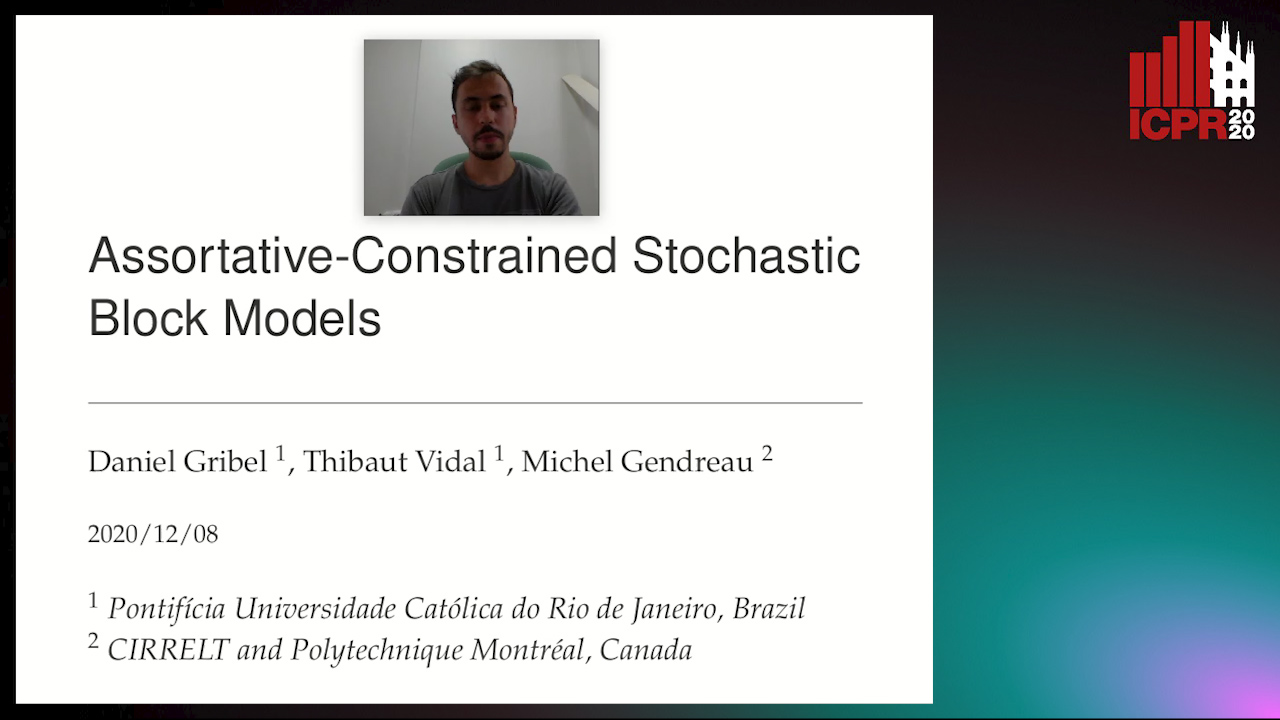
Auto-TLDR; Constrained Stochastic Block Models for Assortative Communities in Neural Networks
Abstract Slides Poster Similar
Uniform and Non-Uniform Sampling Methods for Sub-Linear Time K-Means Clustering

Auto-TLDR; Sub-linear Time Clustering with Constant Approximation Ratio for K-Means Problem
Abstract Slides Poster Similar
A Randomized Algorithm for Sparse Recovery
Huiyuan Yu, Maggie Cheng, Yingdong Lu

Auto-TLDR; A Constrained Graph Optimization Algorithm for Sparse Signal Recovery
An Empirical Bayes Approach to Topic Modeling
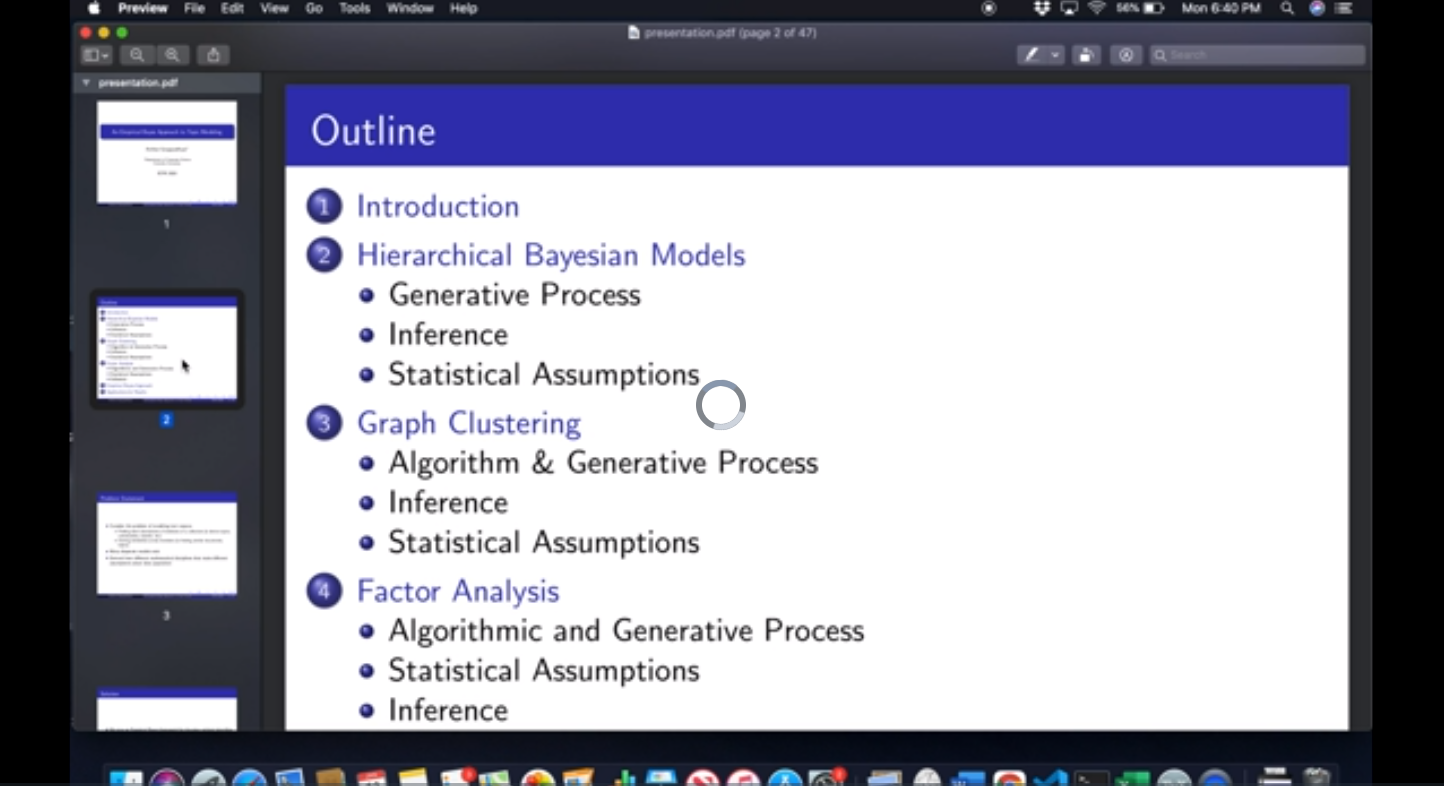
Auto-TLDR; An Empirical Bayes Based Framework for Topic Modeling in Documents
Aggregating Dependent Gaussian Experts in Local Approximation

Auto-TLDR; A novel approach for aggregating the Gaussian experts by detecting strong violations of conditional independence
Abstract Slides Poster Similar
Expectation-Maximization for Scheduling Problems in Satellite Communication
Werner Bailer, Martin Winter, Johannes Ebert, Joel Flavio, Karin Plimon
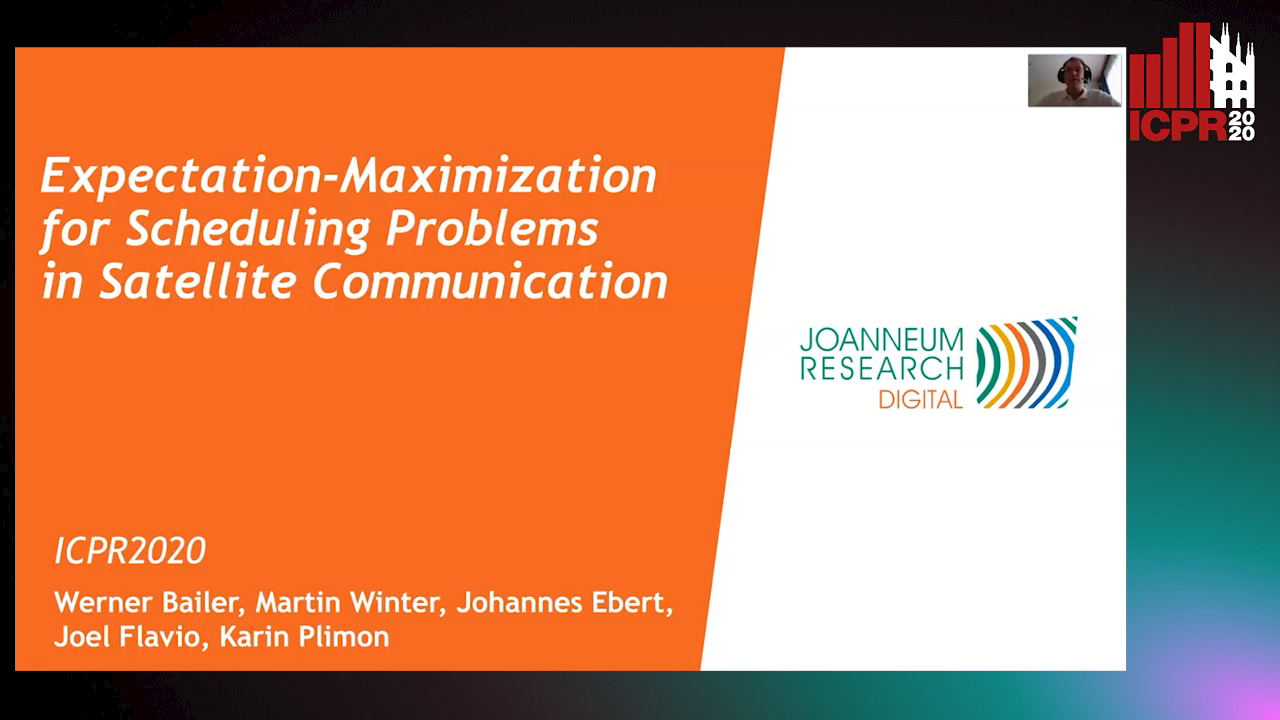
Auto-TLDR; Unsupervised Machine Learning for Satellite Communication Using Expectation-Maximization
Abstract Slides Poster Similar
On Learning Random Forests for Random Forest Clustering
Manuele Bicego, Francisco Escolano

Auto-TLDR; Learning Random Forests for Clustering
Abstract Slides Poster Similar
Scalable Direction-Search-Based Approach to Subspace Clustering

Auto-TLDR; Fast Direction-Search-Based Subspace Clustering
Hcore-Init: Neural Network Initialization Based on Graph Degeneracy
Stratis Limnios, George Dasoulas, Dimitrios Thilikos, Michalis Vazirgiannis

Auto-TLDR; K-hypercore: Graph Mining for Deep Neural Networks
Abstract Slides Poster Similar
Unconstrained Vision Guided UAV Based Safe Helicopter Landing
Arindam Sikdar, Abhimanyu Sahu, Debajit Sen, Rohit Mahajan, Ananda Chowdhury

Auto-TLDR; Autonomous Helicopter Landing in Hazardous Environments from Unmanned Aerial Images Using Constrained Graph Clustering
Abstract Slides Poster Similar
A Heuristic-Based Decision Tree for Connected Components Labeling of 3D Volumes
Maximilian Söchting, Stefano Allegretti, Federico Bolelli, Costantino Grana

Auto-TLDR; Entropy Partitioning Decision Tree for Connected Components Labeling
Abstract Slides Poster Similar
Graph Spectral Feature Learning for Mixed Data of Categorical and Numerical Type
Saswata Sahoo, Souradip Chakraborty
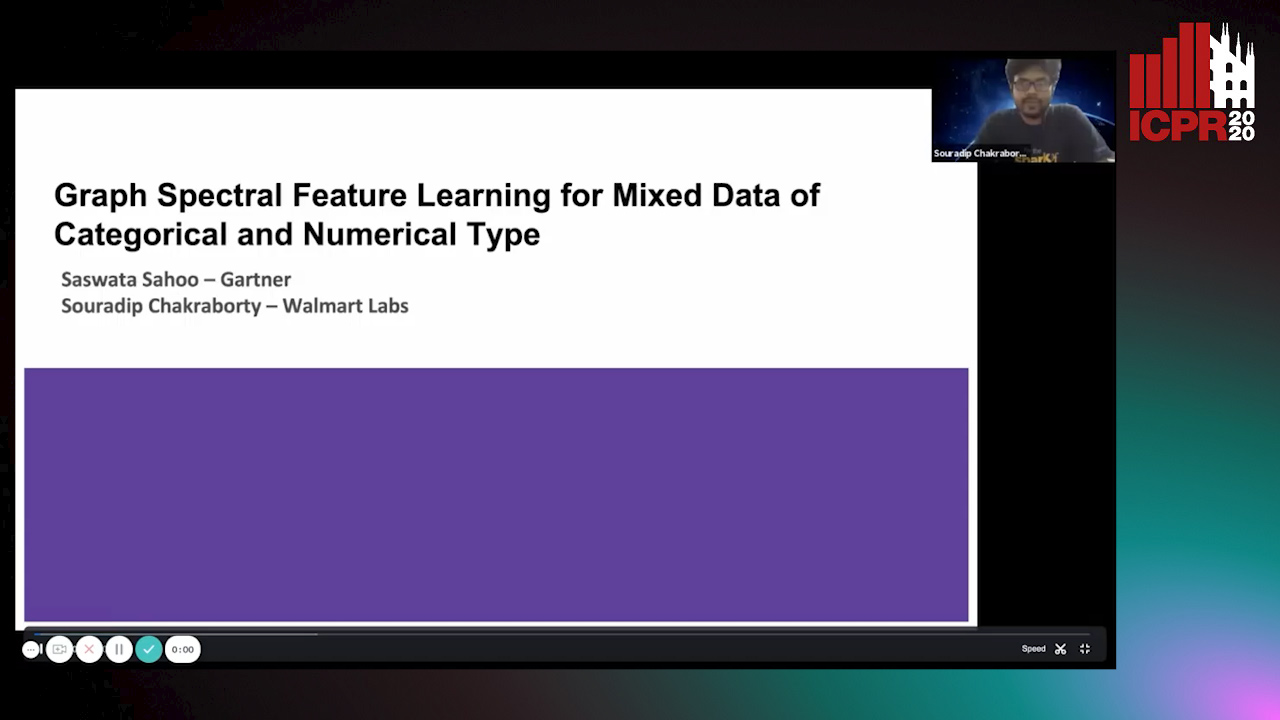
Auto-TLDR; Feature Learning in Mixed Type of Variable by an undirected graph
Abstract Slides Poster Similar
One Step Clustering Based on A-Contrario Framework for Detection of Alterations in Historical Violins
Alireza Rezaei, Sylvie Le Hégarat-Mascle, Emanuel Aldea, Piercarlo Dondi, Marco Malagodi

Auto-TLDR; A-Contrario Clustering for the Detection of Altered Violins using UVIFL Images
Abstract Slides Poster Similar
A Multilinear Sampling Algorithm to Estimate Shapley Values

Auto-TLDR; A sampling method for Shapley values for multilayer Perceptrons
Abstract Slides Poster Similar
Temporal Pattern Detection in Time-Varying Graphical Models
Federico Tomasi, Veronica Tozzo, Annalisa Barla

Auto-TLDR; A dynamical network inference model that leverages on kernels to consider general temporal patterns
Abstract Slides Poster Similar
Motion Segmentation with Pairwise Matches and Unknown Number of Motions
Federica Arrigoni, Tomas Pajdla, Luca Magri

Auto-TLDR; Motion Segmentation using Multi-Modelfitting andpermutation synchronization
Abstract Slides Poster Similar
RNN Training along Locally Optimal Trajectories via Frank-Wolfe Algorithm
Yun Yue, Ming Li, Venkatesh Saligrama, Ziming Zhang

Auto-TLDR; Frank-Wolfe Algorithm for Efficient Training of RNNs
Abstract Slides Poster Similar
Low-Cost Lipschitz-Independent Adaptive Importance Sampling of Stochastic Gradients
Huikang Liu, Xiaolu Wang, Jiajin Li, Man-Cho Anthony So

Auto-TLDR; Adaptive Importance Sampling for Stochastic Gradient Descent
Learning Connectivity with Graph Convolutional Networks

Auto-TLDR; Learning Graph Convolutional Networks Using Topological Properties of Graphs
Abstract Slides Poster Similar
Revisiting Graph Neural Networks: Graph Filtering Perspective
Hoang Nguyen-Thai, Takanori Maehara, Tsuyoshi Murata

Auto-TLDR; Two-Layers Graph Convolutional Network with Graph Filters Neural Network
Abstract Slides Poster Similar
Graph Discovery for Visual Test Generation
Neil Hallonquist, Laurent Younes, Donald Geman

Auto-TLDR; Visual Question Answering over Graphs: A Probabilistic Framework for VQA
Abstract Slides Poster Similar
Thermal Characterisation of Unweighted and Weighted Networks
Jianjia Wang, Hui Wu, Edwin Hancock

Auto-TLDR; Thermodynamic Characterisation of Networks as Particles of the Thermal System
Abstract Slides Poster Similar
Map-Based Temporally Consistent Geolocalization through Learning Motion Trajectories

Auto-TLDR; Exploiting Motion Trajectories for Geolocalization of Object on Topological Map using Recurrent Neural Network
Abstract Slides Poster Similar
Force Banner for the Recognition of Spatial Relations
Robin Deléarde, Camille Kurtz, Laurent Wendling, Philippe Dejean

Auto-TLDR; Spatial Relation Recognition using Force Banners
TreeRNN: Topology-Preserving Deep Graph Embedding and Learning
Yecheng Lyu, Ming Li, Xinming Huang, Ulkuhan Guler, Patrick Schaumont, Ziming Zhang

Auto-TLDR; TreeRNN: Recurrent Neural Network for General Graph Classification
Abstract Slides Poster Similar
2D Discrete Mirror Transform for Image Non-Linear Approximation
Alessandro Gnutti, Fabrizio Guerrini, Riccardo Leonardi
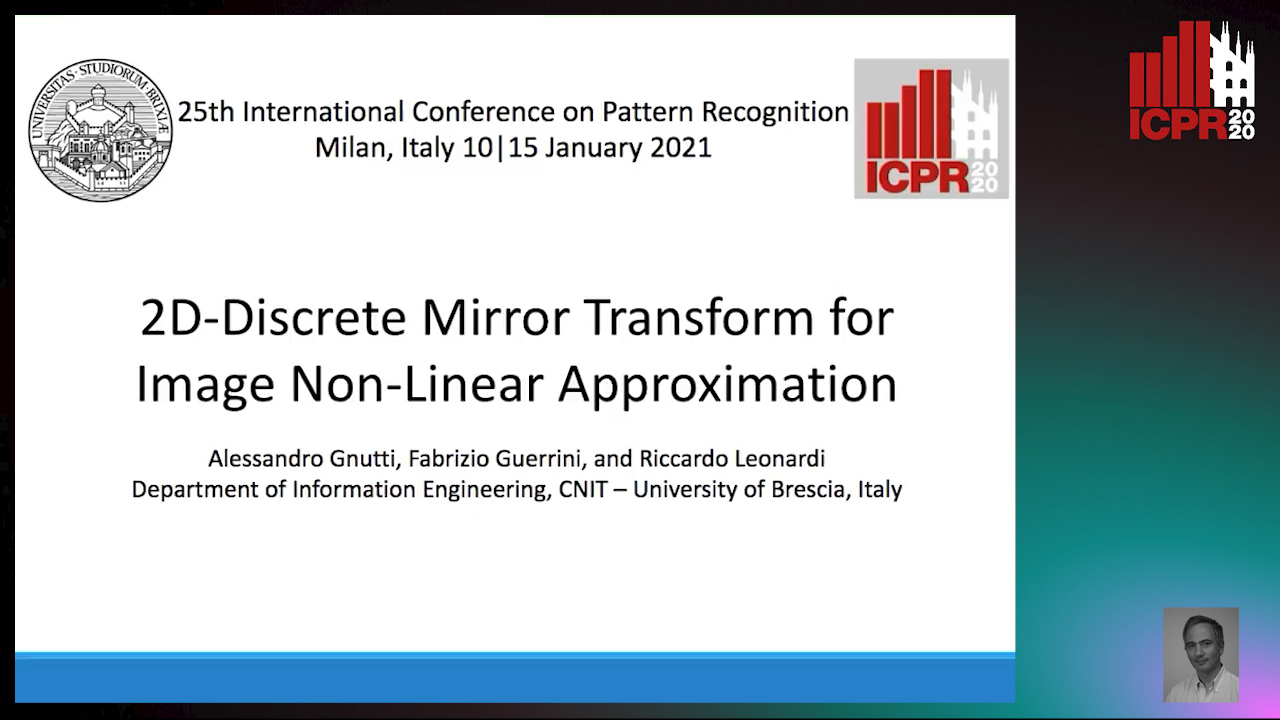
Auto-TLDR; Discrete Mirror Transform (DMT)
Abstract Slides Poster Similar
Naturally Constrained Online Expectation Maximization
Daniela Pamplona, Antoine Manzanera
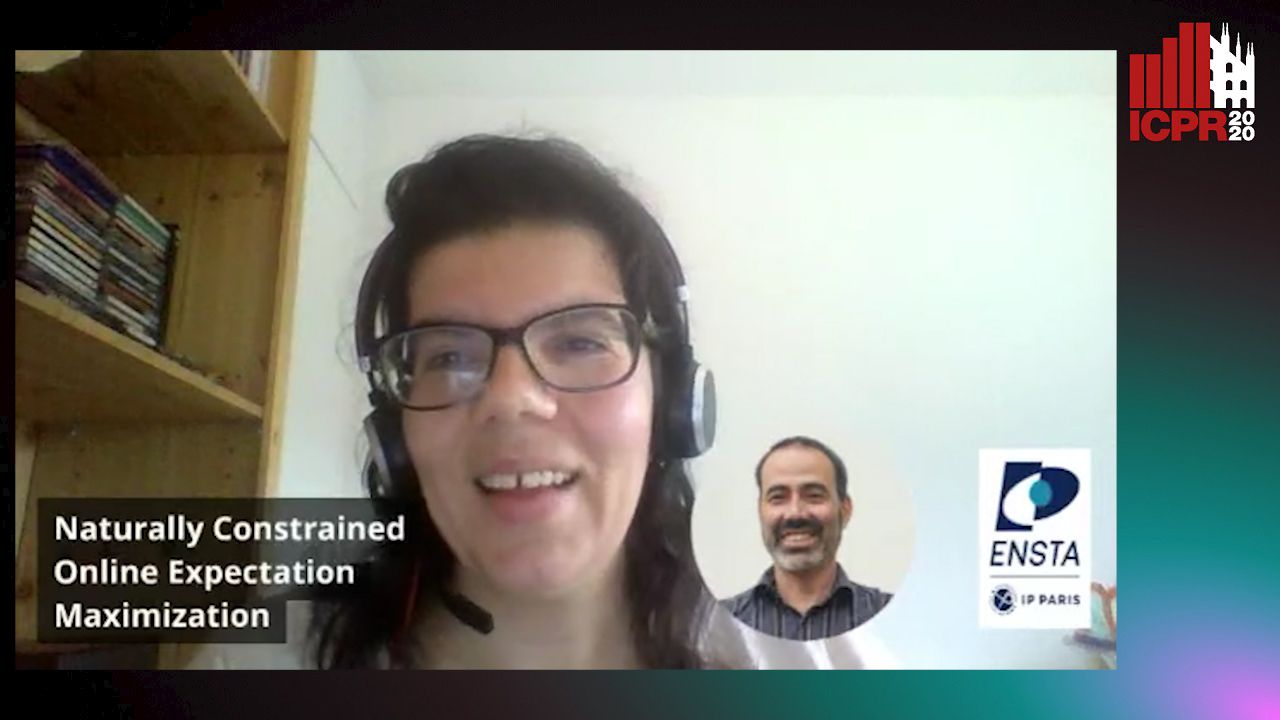
Auto-TLDR; Constrained Online Expectation-Maximization for Probabilistic Principal Components Analysis
Abstract Slides Poster Similar
GraphBGS: Background Subtraction Via Recovery of Graph Signals
Jhony Heriberto Giraldo Zuluaga, Thierry Bouwmans

Auto-TLDR; Graph BackGround Subtraction using Graph Signals
Abstract Slides Poster Similar
Graph Approximations to Geodesics on Metric Graphs
Robin Vandaele, Yvan Saeys, Tijl De Bie
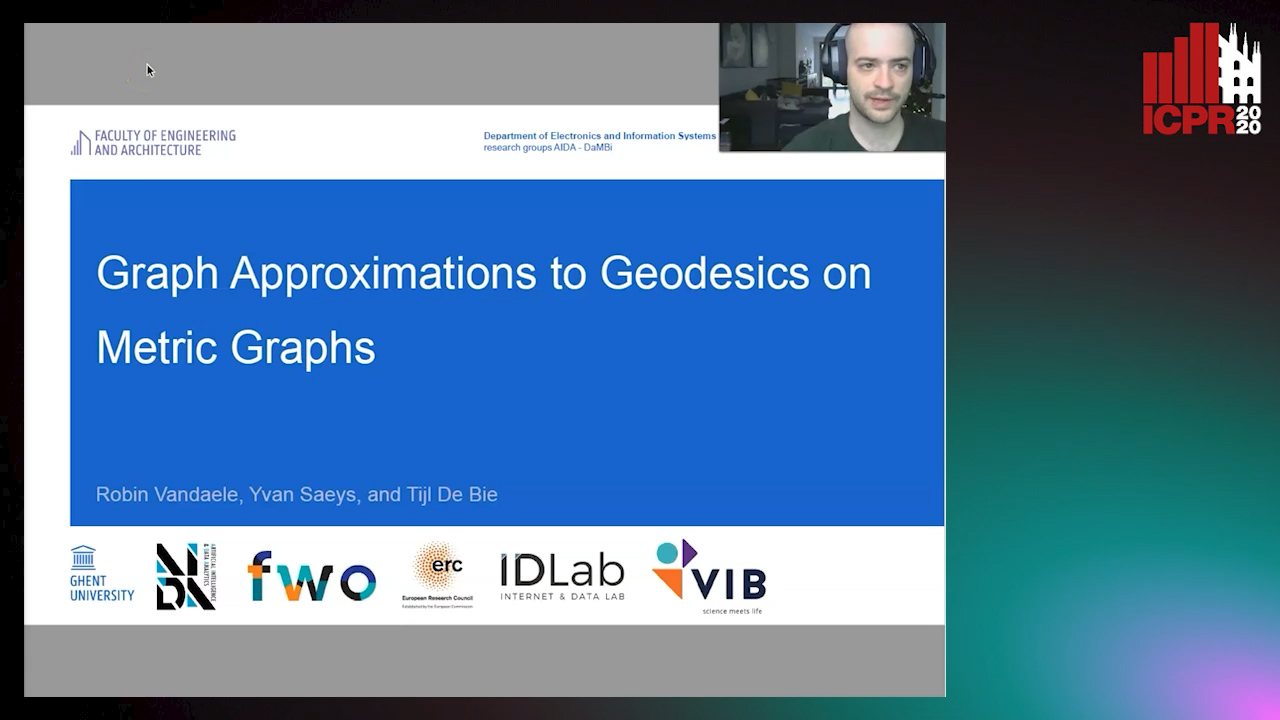
Auto-TLDR; Topological Pattern Recognition of Metric Graphs Using Proximity Graphs
Abstract Slides Poster Similar
Supervised Classification Using Graph-Based Space Partitioning for Multiclass Problems
Nicola Yanev, Ventzeslav Valev, Adam Krzyzak, Karima Ben Suliman
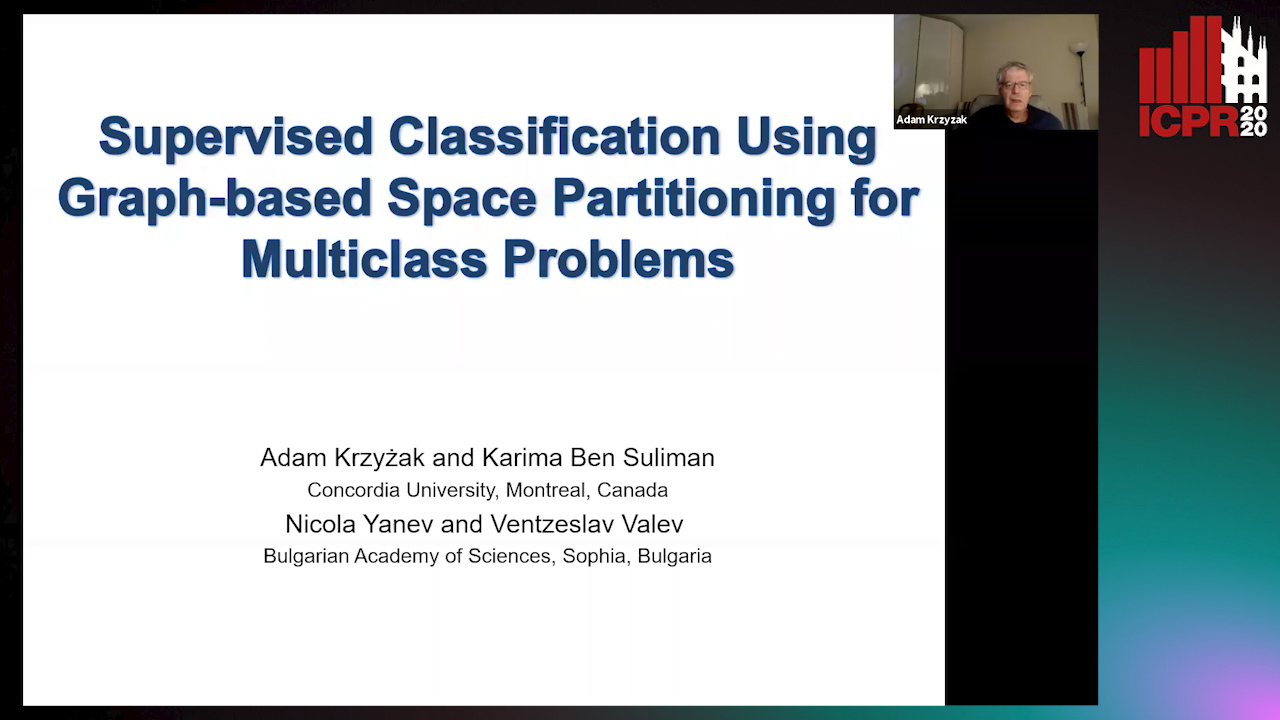
Auto-TLDR; Box Classifier for Multiclass Classification
Abstract Slides Poster Similar
Penalized K-Means Algorithms for Finding the Number of Clusters
Behzad Kamgar-Parsi, Behrooz Kamgar-Parsi
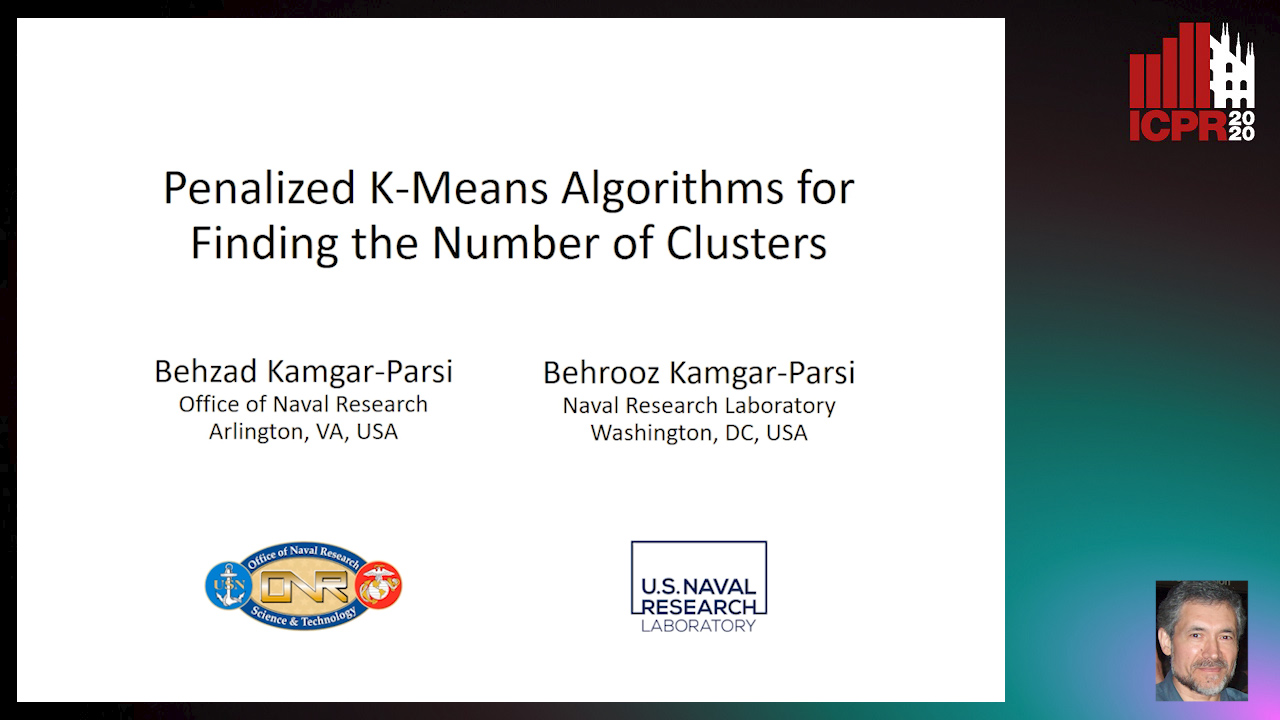
Auto-TLDR; Exploring the coefficient of additive penalty in k-means for ideal clusters
Abstract Slides Poster Similar
On the Global Self-attention Mechanism for Graph Convolutional Networks

Auto-TLDR; Global Self-Attention Mechanism for Graph Convolutional Networks
Rank-Based Ordinal Classification
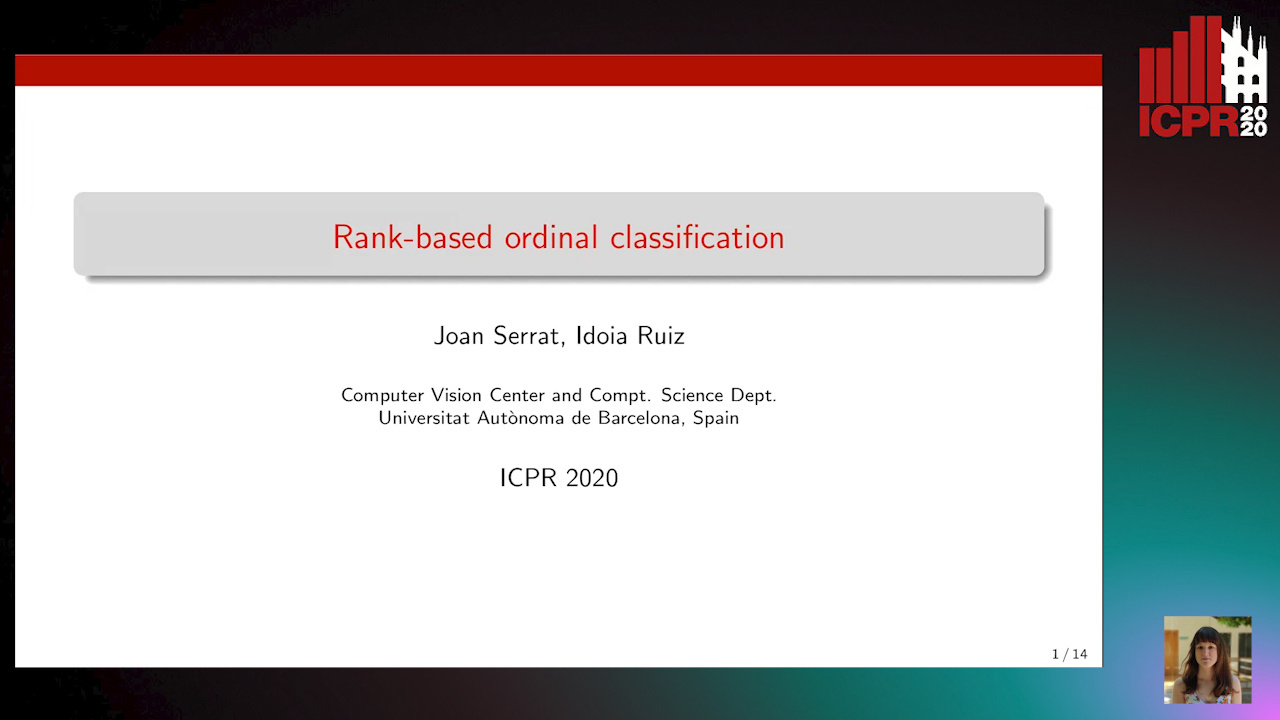
Auto-TLDR; Ordinal Classification with Order
Abstract Slides Poster Similar
Double Manifolds Regularized Non-Negative Matrix Factorization for Data Representation
Jipeng Guo, Shuai Yin, Yanfeng Sun, Yongli Hu
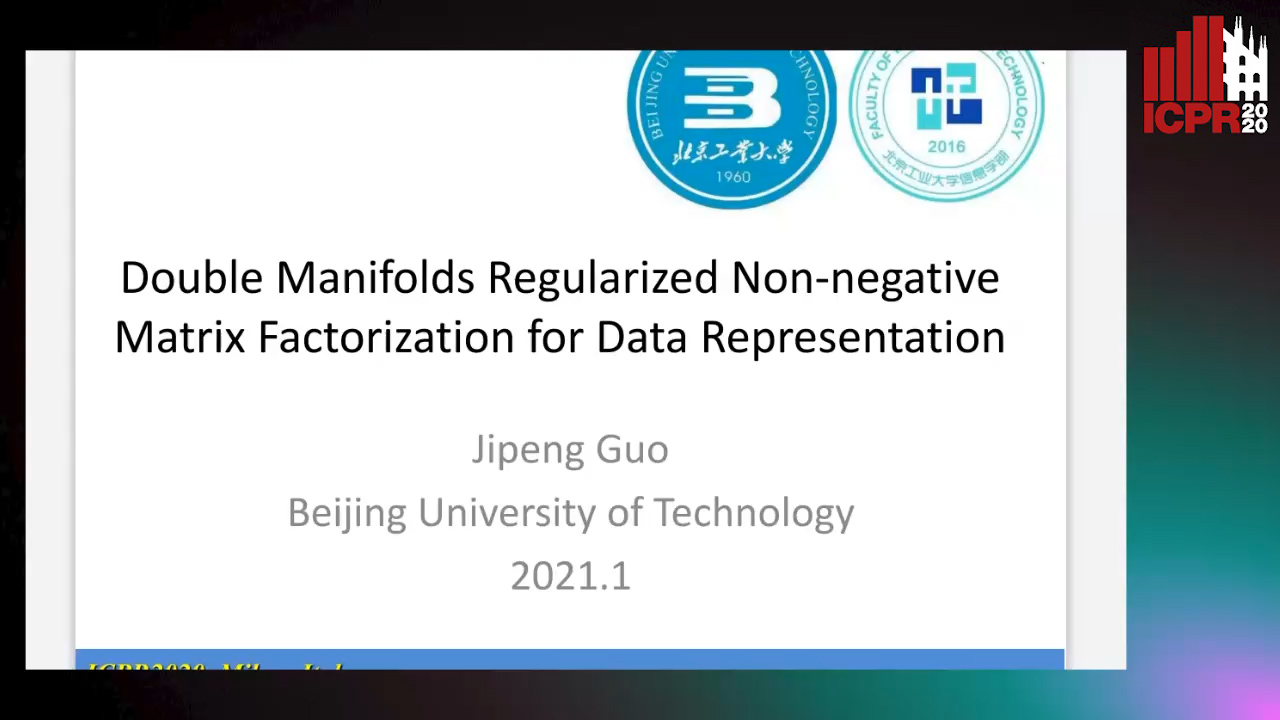
Auto-TLDR; Double Manifolds Regularized Non-negative Matrix Factorization for Clustering
Abstract Slides Poster Similar
On Morphological Hierarchies for Image Sequences
Caglayan Tuna, Alain Giros, François Merciol, Sébastien Lefèvre

Auto-TLDR; Comparison of Hierarchies for Image Sequences
Abstract Slides Poster Similar
A Multi-Task Multi-View Based Multi-Objective Clustering Algorithm
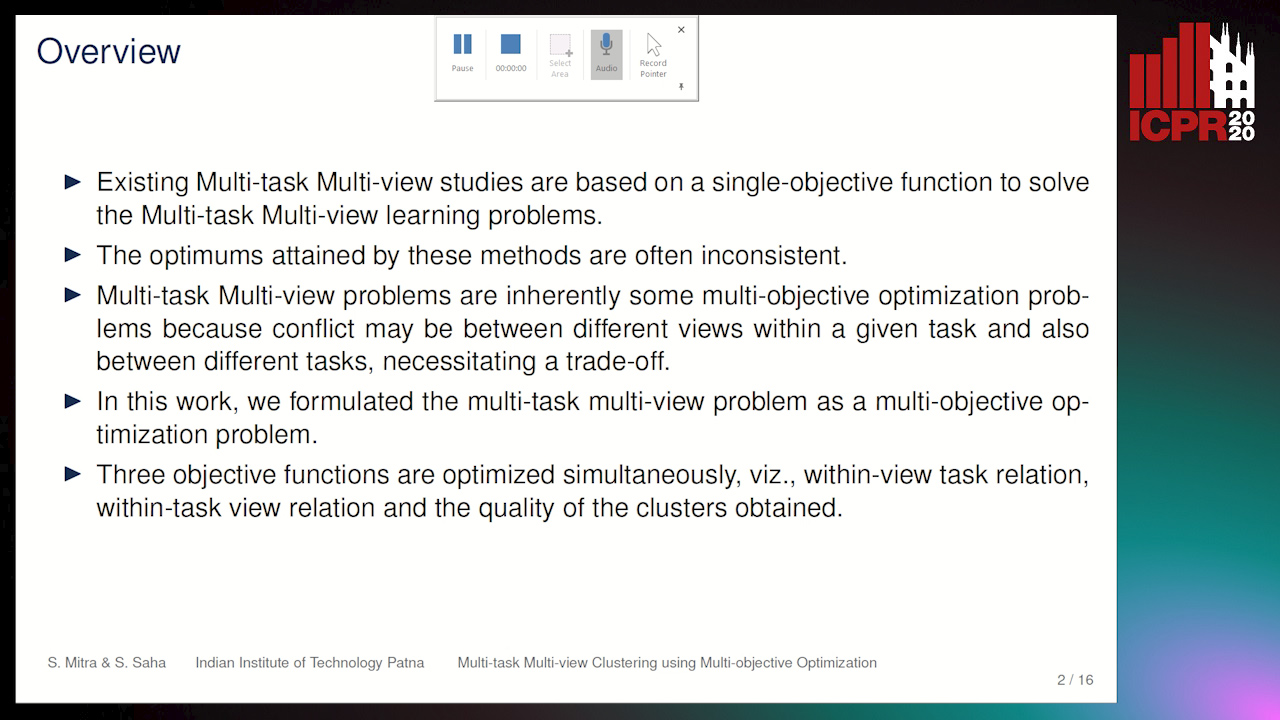
Auto-TLDR; MTMV-MO: Multi-task multi-view multi-objective optimization for multi-task clustering
Abstract Slides Poster Similar
Deep Convolutional Embedding for Digitized Painting Clustering
Giovanna Castellano, Gennaro Vessio

Auto-TLDR; A Deep Convolutional Embedding Model for Clustering Artworks
Abstract Slides Poster Similar
Active Sampling for Pairwise Comparisons via Approximate Message Passing and Information Gain Maximization
Aliaksei Mikhailiuk, Clifford Wilmot, Maria Perez-Ortiz, Dingcheng Yue, Rafal Mantiuk

Auto-TLDR; ASAP: An Active Sampling Algorithm for Pairwise Comparison Data
Fast Subspace Clustering Based on the Kronecker Product
Lei Zhou, Xiao Bai, Liang Zhang, Jun Zhou, Edwin Hancock

Auto-TLDR; Subspace Clustering with Kronecker Product for Large Scale Datasets
Abstract Slides Poster Similar
Exploring and Exploiting the Hierarchical Structure of a Scene for Scene Graph Generation
Ikuto Kurosawa, Tetsunori Kobayashi, Yoshihiko Hayashi
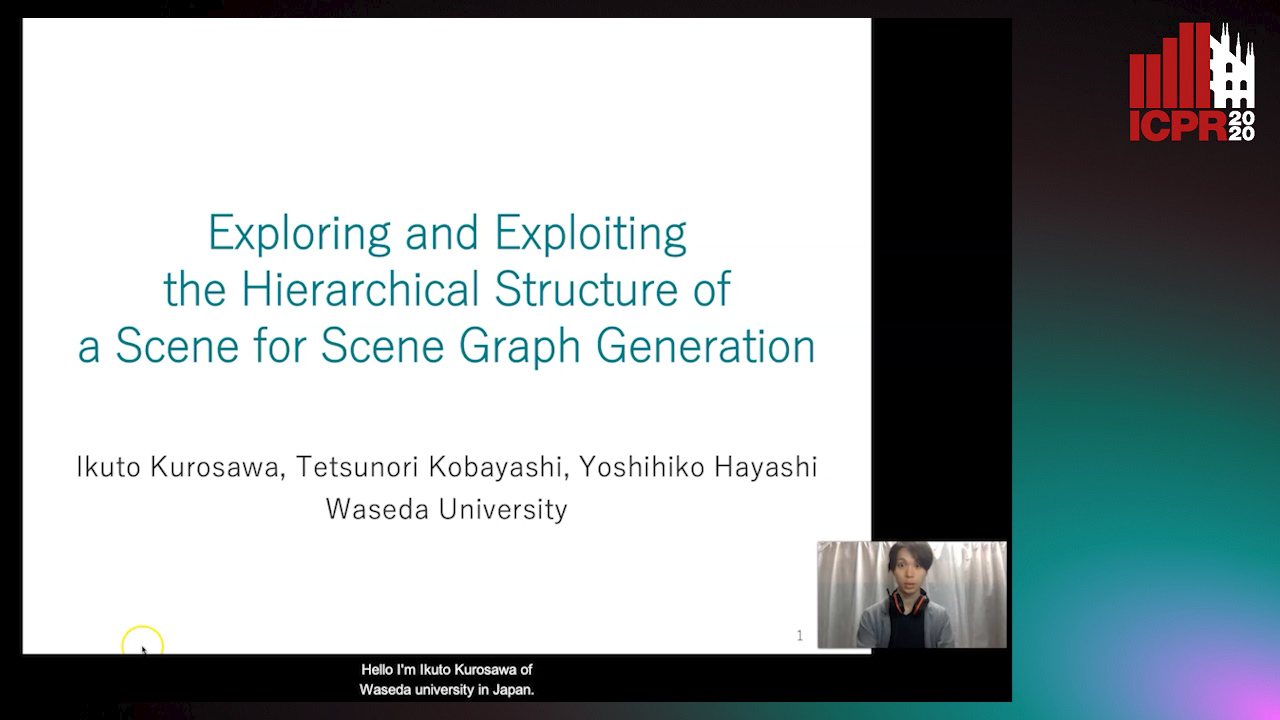
Auto-TLDR; A Hierarchical Model for Scene Graph Generation
Abstract Slides Poster Similar
Learning Parameter Distributions to Detect Concept Drift in Data Streams
Johannes Haug, Gjergji Kasneci
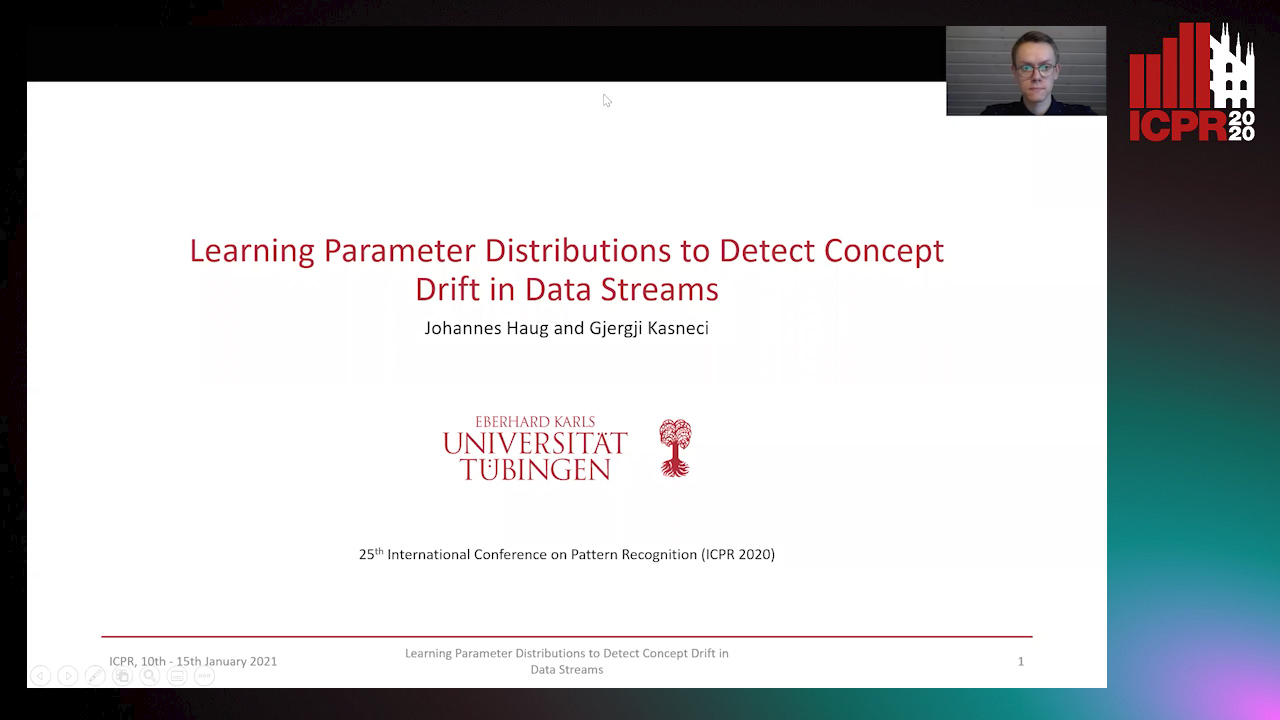
Auto-TLDR; A novel framework for the detection of concept drift in streaming environments
Abstract Slides Poster Similar
AOAM: Automatic Optimization of Adjacency Matrix for Graph Convolutional Network
Yuhang Zhang, Hongshuai Ren, Jiexia Ye, Xitong Gao, Yang Wang, Kejiang Ye, Cheng-Zhong Xu

Auto-TLDR; Adjacency Matrix for Graph Convolutional Network in Non-Euclidean Space
Abstract Slides Poster Similar
Tensor Factorization of Brain Structural Graph for Unsupervised Classification in Multiple Sclerosis
Berardino Barile, Marzullo Aldo, Claudio Stamile, Françoise Durand-Dubief, Dominique Sappey-Marinier
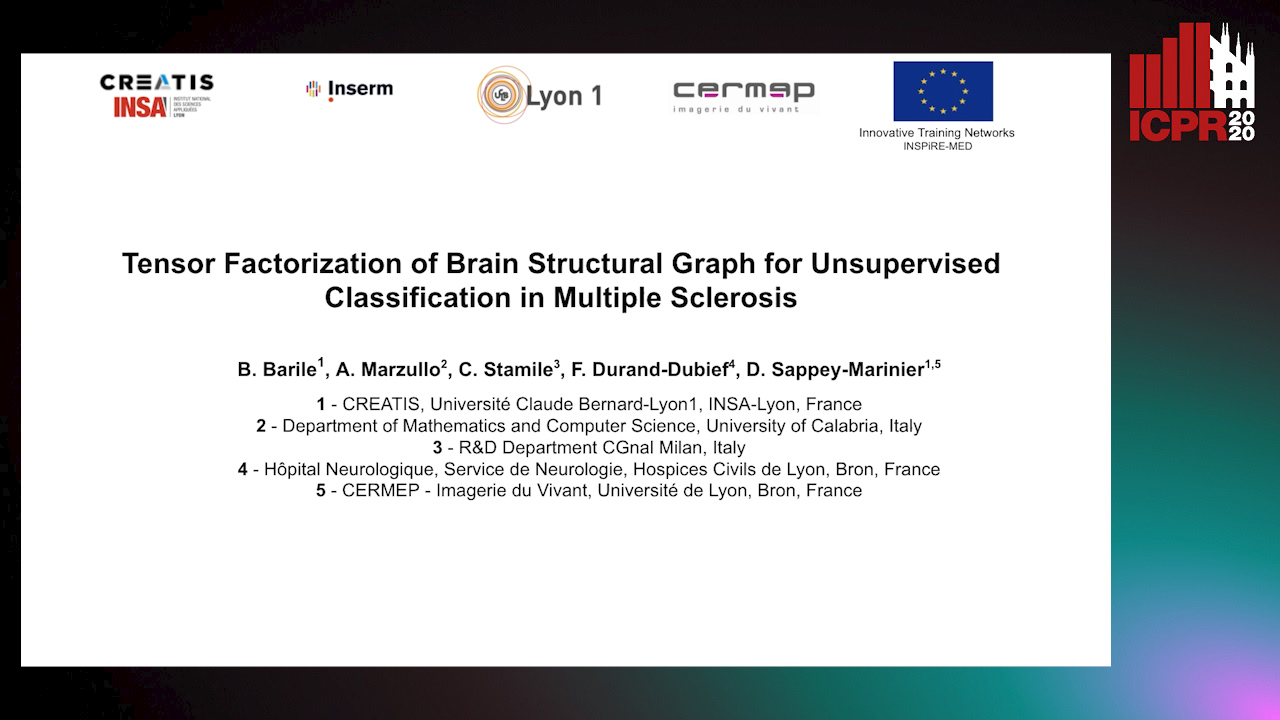
Auto-TLDR; A Fully Automated Tensor-based Algorithm for Multiple Sclerosis Classification based on Structural Connectivity Graph of the White Matter Network
Abstract Slides Poster Similar
Multi-annotator Probabilistic Active Learning
Marek Herde, Daniel Kottke, Denis Huseljic, Bernhard Sick

Auto-TLDR; MaPAL: Multi-annotator Probabilistic Active Learning
Abstract Slides Poster Similar
Hierarchical Routing Mixture of Experts
Wenbo Zhao, Yang Gao, Shahan Ali Memon, Bhiksha Raj, Rita Singh

Auto-TLDR; A Binary Tree-structured Hierarchical Routing Mixture of Experts for Regression
Abstract Slides Poster Similar
Graph Convolutional Neural Networks for Power Line Outage Identification

Auto-TLDR; Graph Convolutional Networks for Power Line Outage Identification
Learning Embeddings for Image Clustering: An Empirical Study of Triplet Loss Approaches
Kalun Ho, Janis Keuper, Franz-Josef Pfreundt, Margret Keuper

Auto-TLDR; Clustering Objectives for K-means and Correlation Clustering Using Triplet Loss
Abstract Slides Poster Similar